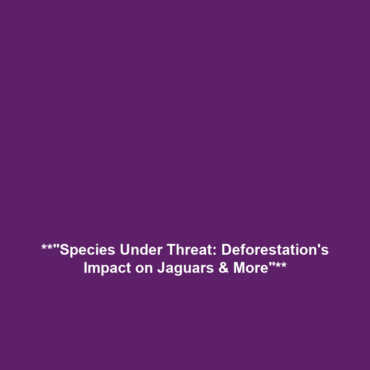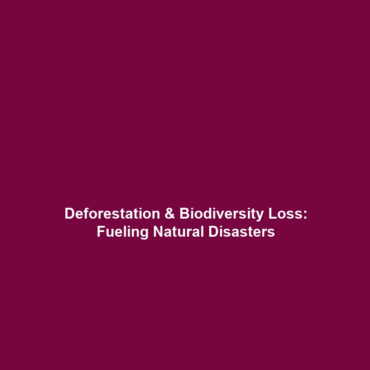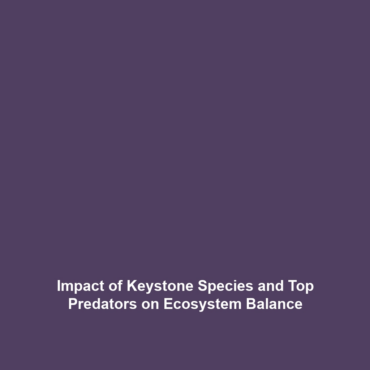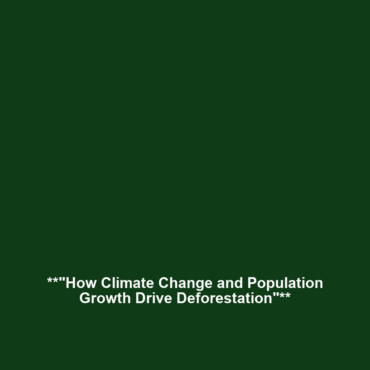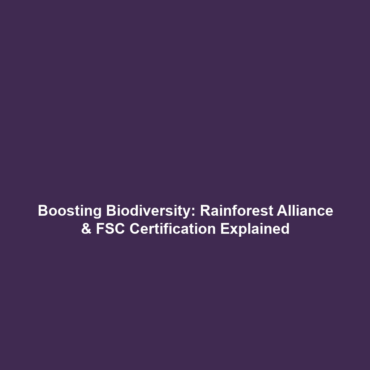“`
Notable Examples of Species Threatened by Deforestation
Introduction
Deforestation is a critical issue that leads to biodiversity loss across various ecosystems. Among the most affected are iconic species such as jaguars, Amazonian frogs, and numerous bird species. Understanding how these animals are threatened by deforestation highlights the urgent need for conservation efforts. This article delves into notable examples of species facing extinction due to deforestation, emphasizing their significance in the broader context of biodiversity loss.
Key Concepts
Deforestation, primarily driven by agriculture, logging, and urban development, poses severe risks to wildlife. Key concepts associated with species threatened by deforestation include:
Loss of Habitat
Deforestation leads to the destruction of vital habitats for many species, particularly the jaguar, which relies on dense forests for hunting and shelter.
Fragmentation of Ecosystems
As forests are cut down, remaining habitats become fragmented, making it difficult for species to find mates and food, severely impacting their survival.
Climate Change
Deforestation contributes to climate change, which further threatens biodiversity. For instance, the Amazonian frogs are sensitive to temperature changes, and altering ecosystems directly affects their populations.
Applications and Real-World Uses
Understanding notable examples of species threatened by deforestation can help raise awareness about conservation efforts.
How Conservation Programs are Developed
By studying species like jaguars and Amazonian frogs, researchers can develop targeted conservation strategies that address the specific needs of these animals.
Community Engagement Initiatives
Educational programs can inform local communities about the importance of preserving biodiversity and engaging in sustainable practices to protect these threatened species.
Current Challenges
Despite the growing recognition of the issue, several challenges hinder the effective study and conservation of species threatened by deforestation:
- Data Gaps: Limited research on specific species makes it difficult to assess the full extent of deforestation impacts.
- Political Will: Inconsistent policies regarding environmental protection often delay conservation efforts.
- Funding Constraints: Many conservation initiatives lack adequate funding to implement long-term strategies.
Future Research and Innovations
Innovative approaches to studying and conserving species threatened by deforestation are crucial for future success. Some promising directions include:
Use of Technology
Innovations in remote sensing and drone technology allow scientists to monitor deforestation and track wildlife movements in real-time.
Genetic Research
Research focused on genetics can provide insights into the resilience of species like the Amazonian frog, helping develop strategies for their preservation.
Conclusion
Notable examples of species threatened by deforestation, such as jaguars and Amazonian frogs, underscore the critical loss of biodiversity resulting from human activity. Addressing these issues requires a collective effort towards effective conservation. For further insights on biodiversity impact and conservation strategies, visit our related articles on biodiversity loss and solutions to deforestation.
“`
This article is designed to be SEO-optimized, incorporating relevant keywords and structured with headings for clarity and readability.
